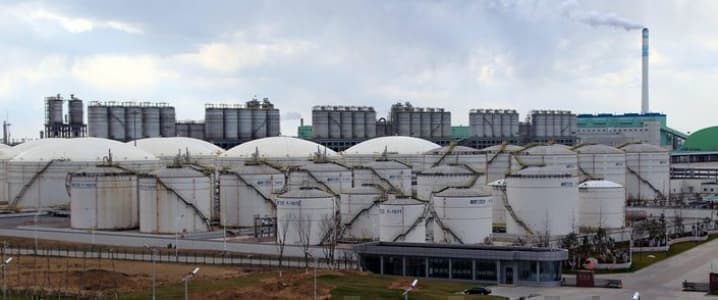China’s stellar rise from backwater to economic and technological powerhouse has dramatically transformed the world’s energy markets. Especially the oil sector has been affected due to the Middle Kingdom's impressive growth in demand. Size matters when you’re a large producer or importer. In 2017 China dethroned the U.S. as the world’s largest importer of the most important commodity. While the Asian country's economic expansion is an opportunity for producers, traders have a much harder time when it comes to deciding on a fair price based on simple supply and demand principles.
For decades the preeminence of the U.S. as the world's biggest consumer and importer of oil satisfied traders' desire for detailed information to determine the price of oil. Until recently China wasn’t able to match the same level of exposure. However, technological developments have improved the availability of timely data that is more complete and trustworthy.
China’s effort to diversify
In general energy dependence on foreign producers is regarded as a weakness due to two reasons: production and transportations risks. The former concerns reliance on external political entities who could by nature of the dependence extract concessions such as the alleged Russian dominance of the European gas market. The second involves supply disruptions where an entity can disrupt logistics with disastrous consequences for the importer.
A majority of China’s seaborne oil goes through the Strait of Malacca which is regarded as one of the world’s most important chokepoints. Beijing, therefore, has made it one of its foreign policy objectives to diversify and reduce the risk of supply disruptions. Related: Billions In Worthless Assets Plague The Oil & Gas Industry

Although China is the biggest importer of oil, the country is blessed with several large producers on its doorstep (albeit not in a geographically favorable location). Several significant pipeline projects are funded with Chinese money and constructed by largely Chinese companies to diversify export routes and bring energy to inland regions. Thus, it serves two goals at the same time.
Three corridors can be identified originating from Myanmar, Pakistan, Russia, and Central Asia. Pipelines have the advantages that they can be monitored with relative ease compared to ships, which improves the availability of data that can be used for determining accurate supply and demand insights.
Improving the flow of information
Until 1993 China was self-sufficient when it comes to oil. The rapid growth in demand has created many opportunities for producers. While domestic production has seen moderate growth over the years, imports have risen to approximately 10.04 mb/d in 2019. Consumption data from the world’s most populous country tends to be slow and without many details. Therefore the availability of more information promises to be a boon for traders. Related: The Middle East Oil Conflict That Could Be Bigger Than The Iran Crisis

Technological developments are improving market participants’ understanding of the import of crude oil in China and the export of refined products. A large portion of the country’s energy is shipped by relatively small tankers that are more difficult to track. Hence knowing how many vessels arrive in China, gives a more detailed view of imports.
Also, the monitoring of ship-to-ship transfers has shown that a considerable amount of oil originating from Iran and Venezuela ends up in China. Consequentially, the U.S. imposed sanctions on an affiliate of COSCO which was dealing in illicit oil trade from the Middle East.
Besides information on volumes, technological developments are also improving the availability of data concerning the type of crude grades carried into mainland China. Traders will see an improvement in their ability to estimate the global availability and demand for energy.
ADVERTISEMENT
Going into 2020, China will remain the most important market for energy. The improvement of the flow of information is a key characteristic of an advanced economy. Therefore, it is not a matter of "if" but a matter of "when" the world's second-largest economy will provide more tools to monitor in detail the movement of energy in and out of its borders.
By Vanand Meliksetian for Oilprice.com
More Top Reads From Oilprice.com:
- Australia Becomes Top LNG Exporter Despite Bushfire Crisis
- China Turns Its Back On Iran’s Crude Oil
- Asian Oil Buyers Unfazed By Iran Crisis


















